Opinion & Analysis
What’s easier: Free throws or three footers?
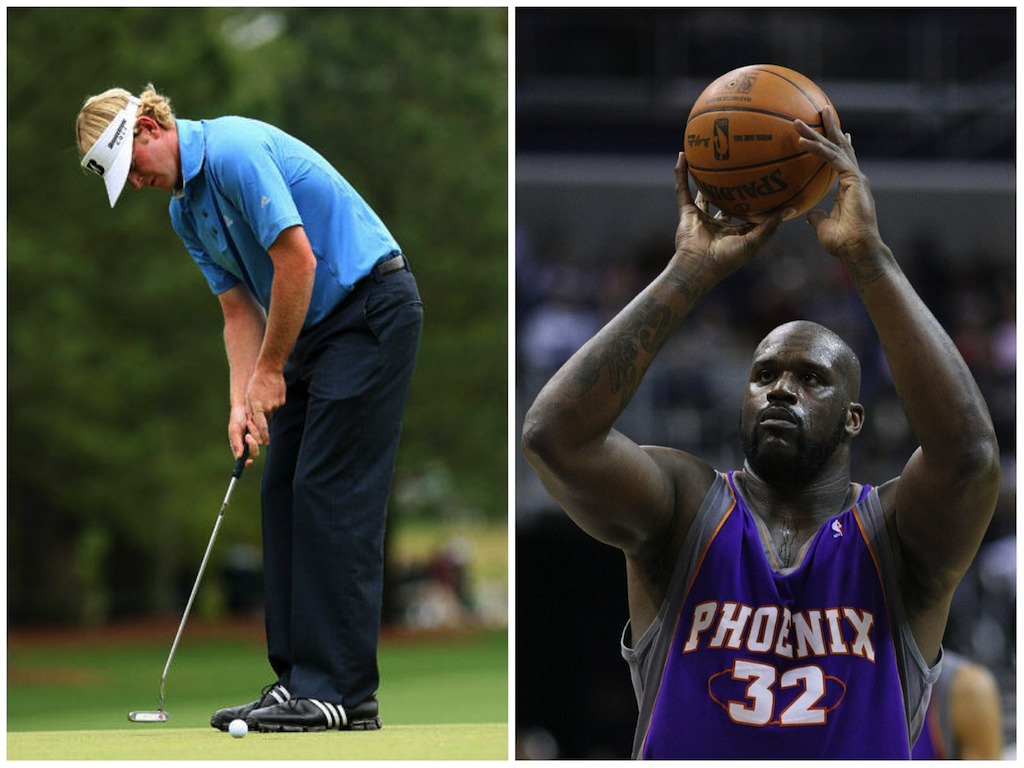
I’ve made three free throws in a row before; before, as in a long, long time ago, and I made maybe five or six in a row during drills when I was at the peak of my teenage game. I’ll also claim 10 in a row when no one was watching. I’ll bet in 35 years of golf, I’ve never made three 15-foot putts in a row, even on a practice green.
Of course there are differences and maybe shooting a free throw and making a putt don’t really correlate. But in this world today, you can statistically compare almost any two things; why not free throws and putts? See which skill is more difficult. Indulge me for a bit of fractured logic that would make Nate Silver shake his head…and if you’re really looking for a serious discussion, well, it’s a big Internet.
The golf hole is about 2.5 times the diameter of the golf ball while the basketball hoop is only 1.8 times larger than the basketball (there won’t be any footnotes to show my calculations). Now there may be some area or volume variables that I don’t understand or account for, but this isn’t fivethirtyeight.com and I’m not smart enough to know that math. Let’s just stipulate that everybody stands 15 feet away from the target. And that it is possible to fit a square peg into a round hole if the square peg is small enough.
My postulation then is, assuming roughly equivalent athleticism and skill levels for the control subjects, it should be easier for a golf ball to fit into a golf hole than it is for a basketball to go into the hoop. The larger the projectile relative to the target’s diameter, the harder it is to fit it in. This isn’t the birds and bees here, kids.
Let’s have the control subjects be top pro athletes; members of the PGA Tour and, even though we’re all crazy with college hoops right now, NBA players.
Okay, this blows my theory to smithereens. From 10-to-15 feet, lasered, this season’s leading tour pro is Matt Every and he has a one-putt from this distance 20.1 percent of the time, making 30 out of 149 tries (through the Valspar Championship). Granted, I doubt if he ever three-putts, but this percentage of makes still seems low. I mean for pros, not for me.
The bottom man on the putting totem pole is Johnson Wagner; he practically laid the goose egg, making a one-putt on just one of 43 tries from 10 to 15 feet in his first 18 rounds this year.
In the NBA, it’s quite a different story from the free throw line; granted, there are no downhill, left-to-right breaking free throws. Stephen Curry and a few others make nine out of 10 tries. And even when the air conditioning is blowing straight into his face, DeAndre Jordan makes nearly 2.5 times as many of his free throws as Matt Every does his 10-to-15-foot putts.
There are many differences, of course. The free throw shooter is facing the basket, holds the ball, looks at his target and knows he has a backboard. The golfer is sideways to the hole, holds a putter, looks at the ball, not the eventual target, and knows he could run it 5 feet by or leave it 4 feet short. Air ball.
Basketball players are likely to be sweaty and in good shape. Pro golfers, too, are in good shape; most look like professional athletes and stand out in a crowd of non-athletes. As for the other: hey, they don’t show the golfers who sweat on TV, at least not during the Sunday afternoon telecasts.
At what distance do pro golfers make the same percentage of putts as NBA players do their free throws?
At 5-to-10 feet, (these stats are only for the distances of the players’ first putt on a green), the PGA Tour percentage doesn’t increase much — a few guys hole 35 out of 100, but no one is making four out of 10 one-putts.
Inside 5 feet, we finally get to a number that fits within the NBA’s free throw percentage range. Kevin Na, at slightly more than 60 percent made one-putts from inside 5 feet, leads the PGA Tour. Kevin would be the guy you’d foul at a crucial point in the game if his sport were hoops, not holes.
The distance that matches the pro golfers’ make percentage with NBA players’ percentage of converting free throws isn’t measured by official PGA Tour statistics. I’d guess that the NBA’s “pro’s par” of 75 percent make-rate is reached by PGA pros at about 2.5-to-3.5 feet, or just outside of tap-in range.
For an NBA player, that distance isn’t a free throw — it’s called a slam-dunk.
- LIKE14
- LEGIT2
- WOW1
- LOL2
- IDHT3
- FLOP3
- OB3
- SHANK27
Opinion & Analysis
The Wedge Guy: What really makes a wedge work? Part 1
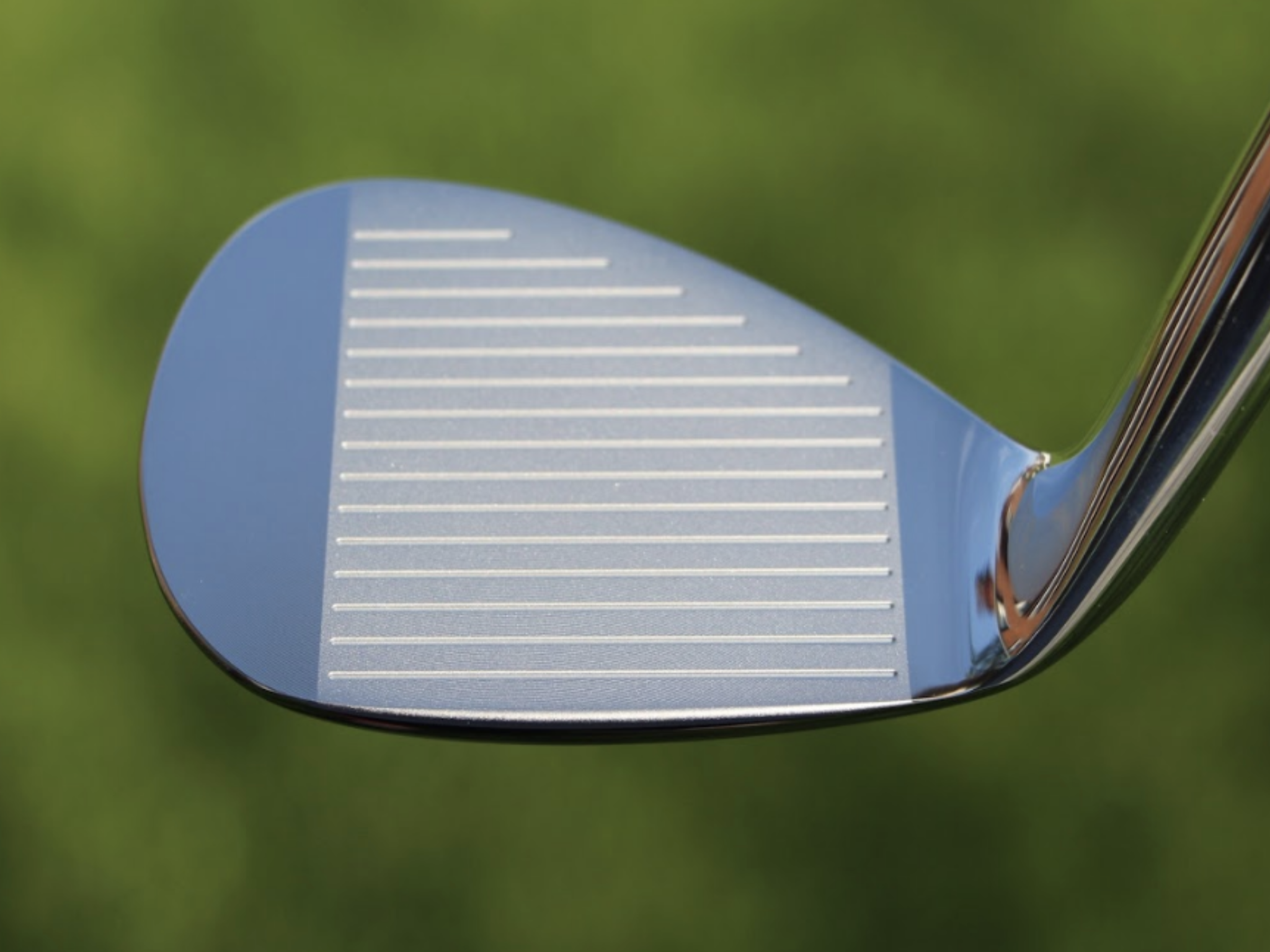
Of all the clubs in our bags, wedges are almost always the simplest in construction and, therefore, the easiest to analyze what might make one work differently from another if you know what to look for.
Wedges are a lot less mysterious than drivers, of course, as the major brands are working with a lot of “pixie dust” inside these modern marvels. That’s carrying over more to irons now, with so many new models featuring internal multi-material technologies, and almost all of them having a “badge” or insert in the back to allow more complex graphics while hiding the actual distribution of mass.
But when it comes to wedges, most on the market today are still single pieces of molded steel, either cast or forged into that shape. So, if you look closely at where the mass is distributed, it’s pretty clear how that wedge is going to perform.
To start, because of their wider soles, the majority of the mass of almost any wedge is along the bottom third of the clubhead. So, the best wedge shots are always those hit between the 2nd and 5th grooves so that more mass is directly behind that impact. Elite tour professionals practice incessantly to learn to do that consistently, wearing out a spot about the size of a penny right there. If impact moves higher than that, the face is dramatically thinner, so smash factor is compromised significantly, which reduces the overall distance the ball will fly.
Every one of us, tour players included, knows that maddening shot that we feel a bit high on the face and it doesn’t go anywhere, it’s not your fault.
If your wedges show a wear pattern the size of a silver dollar, and centered above the 3rd or 4th groove, you are not getting anywhere near the same performance from shot to shot. Robot testing proves impact even two to three grooves higher in the face can cause distance loss of up to 35 to 55 feet with modern ‘tour design’ wedges.
In addition, as impact moves above the center of mass, the golf club principle of gear effect causes the ball to fly higher with less spin. Think of modern drivers for a minute. The “holy grail” of driving is high launch and low spin, and the driver engineers are pulling out all stops to get the mass as low in the clubhead as possible to optimize this combination.
Where is all the mass in your wedges? Low. So, disregarding the higher lofts, wedges “want” to launch the ball high with low spin – exactly the opposite of what good wedge play requires penetrating ball flight with high spin.
While almost all major brand wedges have begun putting a tiny bit more thickness in the top portion of the clubhead, conventional and modern ‘tour design’ wedges perform pretty much like they always have. Elite players learn to hit those crisp, spinny penetrating wedge shots by spending lots of practice time learning to consistently make contact low in the face.
So, what about grooves and face texture?
Grooves on any club can only do so much, and no one has any material advantage here. The USGA tightly defines what we manufacturers can do with grooves and face texture, and modern manufacturing techniques allow all of us to push those limits ever closer. And we all do. End of story.
Then there’s the topic of bounce and grinds, the most complex and confusing part of the wedge formula. Many top brands offer a complex array of sole configurations, all of them admittedly specialized to a particular kind of lie or turf conditions, and/or a particular divot pattern.
But if you don’t play the same turf all the time, and make the same size divot on every swing, how would you ever figure this out?
The only way is to take any wedge you are considering and play it a few rounds, hitting all the shots you face and observing the results. There’s simply no other way.
So, hopefully this will inspire a lively conversation in our comments section, and I’ll chime in to answer any questions you might have.
And next week, I’ll dive into the rest of the wedge formula. Yes, shafts, grips and specifications are essential, too.
- LIKE22
- LEGIT7
- WOW1
- LOL1
- IDHT2
- FLOP2
- OB1
- SHANK1
Golf's Perfect Imperfections
Golf’s Perfect Imperfections: Amazing Session with Performance Coach Savannah Meyer-Clement
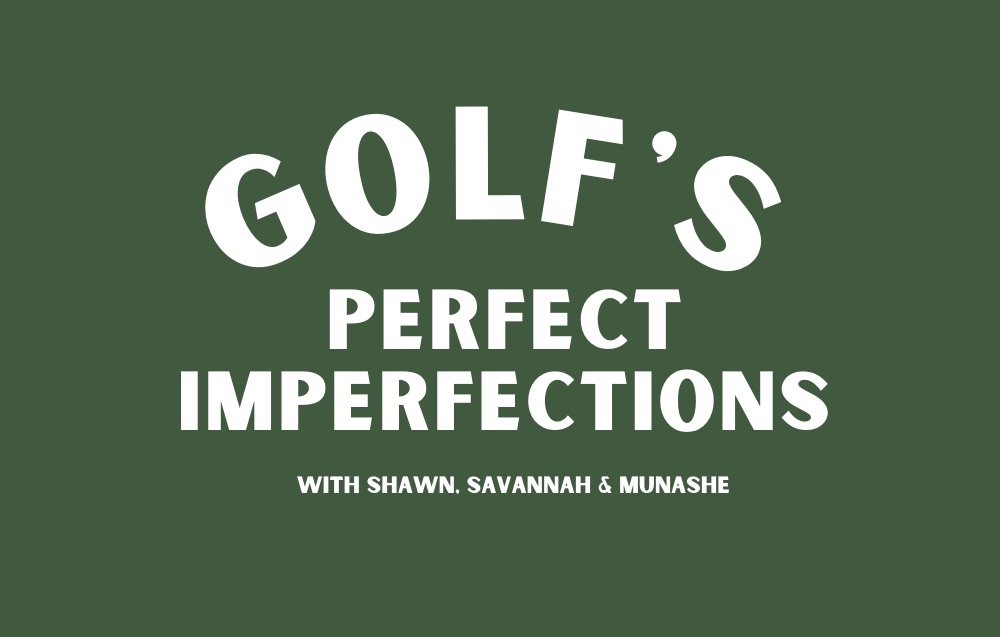
In this week’s episode, we spent some time with performance coach Savannah Meyer-Clement who provides many useful insights that you’ll be able to implement on the golf course.
- LIKE0
- LEGIT0
- WOW0
- LOL0
- IDHT0
- FLOP0
- OB0
- SHANK0
19th Hole
Vincenzi’s 2024 RBC Heritage betting preview: Patrick Cantlay ready to get back inside winner’s circle
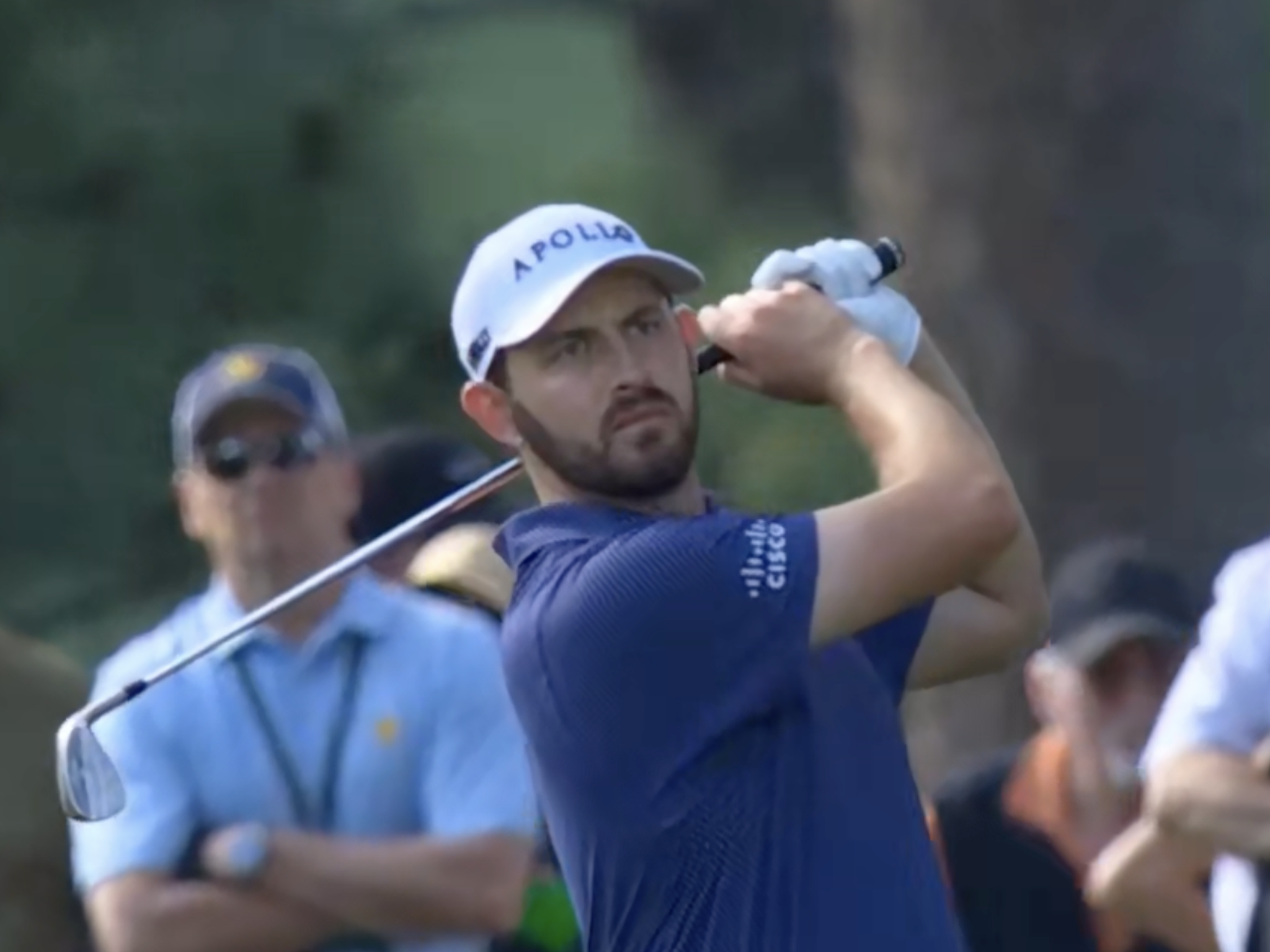
Just a two-hour drive from Augusta National, the PGA TOUR heads to Harbour Town Golf Links in Hilton Head Island, S.C. Hilton Head Island is a golfer’s paradise and Harbour Town is one of the most beautiful and scenic courses on the PGA TOUR.
Harbour Town Golf Links is a par-71 that measures 7,121 yards and features Bermuda grass greens. A Pete Dye design, the course is heavily tree lined and features small greens and many dog legs, protecting it from “bomb-and-gauge” type golfers.
The field is loaded this week with 69 golfers with no cut. Last year was quite possibly the best field in RBC Heritage history and the event this week is yet another designated event, meaning there is a $20 million prize pool.
Most of the big names on the PGA Tour will be in attendance this week with the exceptions of Hideki Matsuyama and Viktor Hovland. Additionally, Webb Simpson, Shane Lowry, Gary Woodland and Kevin Kisner have been granted sponsors exemptions.
Past Winners at Harbour Town
- 2023: Matt Fitzpatrick (-17)
- 2022: Jordan Spieth (-13)
- 2021: Stewart Cink (-19)
- 2020: Webb Simpson (-22)
- 2019: CT Pan (-12)
- 2018: Sotoshi Kodaira (-12)
- 2017: Wesley Bryan (-13)
- 2016: Branden Grace (-9)
- 2015: Jim Furyk (-18)
In this article and going forward, I’ll be using the Rabbit Hole by Betsperts Golf data engine to develop my custom model. If you want to build your own model or check out all of the detailed stats, you can sign up using promo code: MATTVIN for 25% off any subscription package (yearly is best value).
Key Stats For Harbour Town
Let’s take a look at key metrics for Harbour Town Golf Links to determine which golfers boast top marks in each category over their past 24 rounds.
Strokes Gained: Approach
Strokes Gained: Approach is exceedingly important this week. The greens at Harbour Town are about half the size of PGA TOUR average and feature the second-smallest greens on the tour. Typical of a Pete Dye design, golfers will pay the price for missed greens.
Total SG: Approach Over Past 24 Rounds
- Scottie Scheffler (+1.27)
- Tom Hoge (+1.27)
- Corey Conners (+1.16)
- Austin Eckroat (+0.95)
- Cameron Young (+0.93)
Good Drive %
The fairways at Harbour Town are tree lined and feature many dog legs. Bombers tend to struggle at the course because it forces layups and doesn’t allow long drivers to overpower it. Accuracy is far more important than power.
Good Drive % Over Past 24 Rounds
- Brice Garnett (88.8%)
- Shane Lowry (+87.2%)
- Akshay Bhatia (+86.0%)
- Si Woo Kim (+85.8%)
- Sepp Straka (+85.1%)
Strokes Gained: Total at Pete Dye Designs
Pete Dye specialists tend to play very well at Harbour Town. Si Woo Kim, Matt Kuchar, Jim Furyk and Webb Simpson are all Pete Dye specialists who have had great success here. It is likely we see some more specialists near the top of the leaderboard this week.
SG: TOT Pete Dye per round over past 36 rounds:
- Xander Schauffele (+2.27)
- Scottie Scheffler (+2.24)
- Ludvig Aberg (+2.11)
- Brian Harman (+1.89)
- Sungjae Im (+1.58)
4. Strokes Gained: Short Game (Bermuda)
Strokes Gained: Short Game factors in both around the green and putting. With many green-side bunkers and tricky green complexes, both statistics will be important. Past winners — such as Jim Furyk, Wes Bryan and Webb Simpson — highlight how crucial the short game skill set is around Harbour Town.
SG: SG Over Past 24 Rounds
- Jordan Spieth (+1.11)
- Taylor Moore (+1.02)
- Wyndham Clark (+0.98)
- Mackenzie Hughes (+0.86)
- Andrew Putnam (+0.83)
5. Greens in Regulation %
The recipe for success at Harbour Town Golf Links is hitting fairways and greens. Missing either will prove to be consequential — golfers must be in total control of the ball to win.
Greens in Regulation % over past 24 rounds:
- Brice Garnett (+75.0%)
- Scottie Scheffler (+69.9%)
- Corey Conners (+69.0%)
- Shane Lowry (+68.3%)
- Patrick Rodgers (+67.6%)
6. Course History
Harbour Town is a course where players who have strong past results at the course always tend to pop up.
Course History over past 24 rounds:
- Patrick Cantlay (+2.34)
- Cam Davis (+2.05)
- J.T. Poston (+1.69)
- Justin Rose (+1.68)
- Tommy Fleetwood (+1.59)
The RBC Heritage Model Rankings
Below, I’ve compiled overall model rankings using a combination of the five key statistical categories previously discussed — SG: Approach (24%), Good Drives (20%), SG: SG (14%), SG: Pete Dye (14%), GIR (14%), and Course History (14%)
- Shane Lowry
- Russell Henley
- Scottie Scheffler
- Xander Schauffele
- Corey Conners
- Wyndham Clark
- Christiaan Bezuidenhout
- Matt Fitzpatrick
- Cameron Young
- Ludvig Aberg
2024 RBC Heritage Picks
Patrick Cantlay +2000 (FanDuel)
With the exception of Scottie Scheffler, the PGA Tour has yet to have any of their star players show peak form during the 2024 season. Last week, Patrick Cantlay, who I believe is a top-5 players on the PGA Tour, took one step closer to regaining the form that’s helped him win eight events on Tour since 2017.
Cantlay limped into the Masters in poor form, but figured it out at Augusta National, finishing in a tie for 20th and ranking 17th for the week in Strokes Gained: Ball Striking. The former FedEx Cup champion will now head to one of his favorite golf courses in Harbour Town, where he’s had immaculate results over the years. In his six trips to the course, he’s only finished worse than 7th one time. The other finishes include three third places (2017, 2019, 2023) and one runner-up finish (2022). In his past 36 rounds at Harbour Town, Cantlay ranks 1st in Strokes Gained: Total per round at the course by a wide margin (+2.36).
Cantlay is winless since the 2022 BMW Championship, which is far too long for a player of his caliber. With signs pointing to the 32-year-old returning to form, a “signature event” at Harbour Town is just what he needs to get back on the winning track.
Tommy Fleetwood +3000 (FanDuel)
I truly believe Tommy Fleetwood will figure out a way to win on American soil in 2024. It’s certainly been a bugaboo for him throughout his career, but he is simply too talented to go another season without winning a PGA Tour event.
At last week’s Masters Tournament, Fleetwood made a Sunday charge and ended up finishing T3 in the event, which was his best ever finish at The Masters. For the week, the Englishman ranked 8th in the field in Strokes Gained: Approach, 10th in Strokes Gained: Ball Striking and 16th in Strokes Gained: Putting.
Harbour Town is a perfect layout for Fleetwood, and he’s had relative success at this Pete Dye design in the past. In his four trips to the course, he’s finished inside of the top 25 three times, with his best finish, T10, coming in 2022. The course is pretty short and can’t be overpowered, which gives an advantage to more accurate players such as Fleetwood. Tommy ranks 8th in the field in Good Drive % and should be able to plot his way along this golf course.
The win is coming for Tommy lad. I believe there’s a chance this treasure of a golf course may be the perfect one for him to finally break through on Tour.
Cameron Young +3300 (FanDuel)
Cameron Young had a solid Masters Tournament last week, which is exactly what I’m looking for in players who I anticipate playing well this week at the RBC Heritage. He finished in a tie for 9th, but never felt the pressure of contending in the event. For the week, Young ranked 6th in Strokes Gained: Off the Tee and 6th in Strokes Gained: Ball Striking.
Despite being one of the longest players off the tee on the PGA Tour, Young has actually played some really good golf on shorter tracks. He finished T3 at Harbour Town in 2023 and ranks 20th in the field in Good Drive% and 16th in Greens in Regulation in his past 24 rounds. He also has strong finishes at other shorter courses that can take driver out of a players hand such as Copperhead and PGA National.
Young is simply one of the best players on the PGA Tour in 2024, and I strongly believe has what it takes to win a PGA Tour event in the very near future.
Corey Conners +5500 (FanDuel)
Corey Conners has had a disappointing year thus far on the PGA Tour, but absolutely loves Harbour Town.
At last week’s Masters Tournament, the Canadian finished T30 but ranked 20th in the field in Strokes Gained: Approach. In his past 24 rounds, Conners ranks 3rd in the field in Strokes Gained: Approach, 3rd in Greens in Regulation % and 24th in Good Drive %.
In Conners’ last four trips to Harbour Town, his worst finish was T31, last season. He finished T4 in 2021, T12 in 2022 and ranks 8th in Strokes Gained: Total at the course over his past 36 rounds.
Conners hasn’t been contending, but his recent finishes have been encouraging as he has finished in the top-25 in each of his past three starts prior to The Masters, including an impressive T13 at The PLAYERS. His recent improvement in ball striking as well as his suitability for Harbour Town makes Conners a high upside bet this week.
Shane Lowry (+7500) (FanDuel)
When these odds were posted after Lowry was announced in the field, I have to admit I was pretty stunned. Despite not offering much win equity on the PGA Tour over the last handful of years, Shane Lowry is still a top caliber player who has the ability to rise to the top of a signature event.
Lowry struggled to score at The Masters last week, but he actually hit the ball really well. The Irishman ranked 1st for Strokes Gained: Approach on the week and 7th in Strokes Gained: Ball Striking. As usual, it was the putter that let him down, as he ranked 60th in the field in Strokes Gained: Putting.
Harbour Town is most definitely one of Lowry’s favorite courses on the PGA Tour. In his six starts there, he’s finished in the top 10 three times, including third twice. Lowry is sensational at Pete Dye designs and ranks 7th in Strokes Gained: Total in his past 36 rounds on Dye tracks.
Lowry is perfect for Harbour Town. In his past 24 rounds, he ranks 5th in Strokes Gained: Approach, 2nd in Good Drive% and 5th in Green in Regulation %. If he figures it out on the greens, Shane could have his first win in America since 2015.
Lucas Glover +12000 (FanDuel)
This is one of my weekly “bet the number” plays as I strongly believe the odds are just too long for a player of Glover’s caliber. The odds have been too long on Glover for a few weeks now, but this is the first event that I can get behind the veteran being able to actually contend at.
Glover is quietly playing good golf and returning to the form he had after the understandable regression after his two massive victories at the end of 2023. He finished T20 at The Masters, which was his best ever finish at Augusta National. For the week, Lucas ranked 18th for Strokes Gained: Approach and 20th in Strokes Gained: Ball Striking.
Over his past 24 rounds, Glover ranks 9th in Strokes Gained: Approach and 13th in Good Drive %. Harbour Town is a short course that the 44-year-old will be able to keep up with the top players on Tour off the tee. He’s played the course more than 20 times, with mixed results. His best finishes at Harbour Town include a T7 in 2008, but recently has a finish of T21 in 2020.
Glover has proven he can contend with the stars of the Tour on any given week, and this number is flat out disrespectful.
- LIKE30
- LEGIT5
- WOW2
- LOL1
- IDHT1
- FLOP2
- OB0
- SHANK2
-
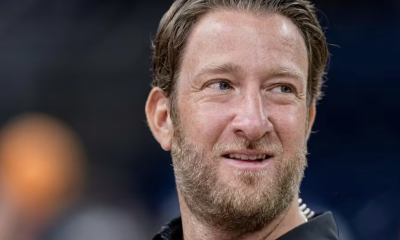
 19th Hole1 week ago
19th Hole1 week agoDave Portnoy places monstrous outright bet for the 2024 Masters
-
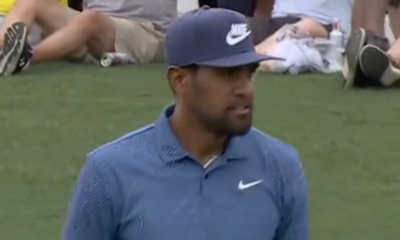
 19th Hole3 weeks ago
19th Hole3 weeks agoThings got heated at the Houston Open between Tony Finau and Alejandro Tosti. Here’s why
-
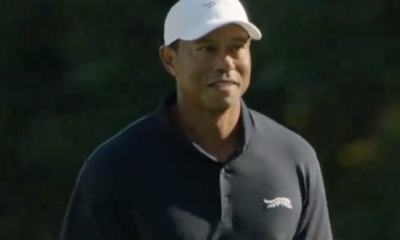
 19th Hole1 week ago
19th Hole1 week agoTiger Woods arrives at 2024 Masters equipped with a putter that may surprise you
-
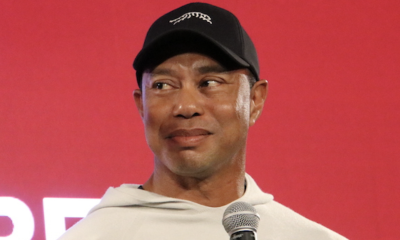
 19th Hole2 weeks ago
19th Hole2 weeks agoReport: Tiger Woods has ‘eliminated sex’ in preparation for the 2024 Masters
-
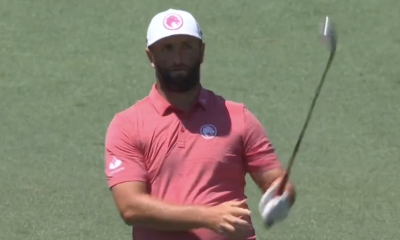
 19th Hole5 days ago
19th Hole5 days agoTwo star names reportedly blanked Jon Rahm all week at the Masters
-
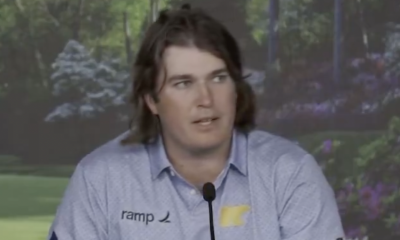
 19th Hole4 days ago
19th Hole4 days agoNeal Shipley presser ends in awkward fashion after reporter claims Tiger handed him note on 8th fairway
-
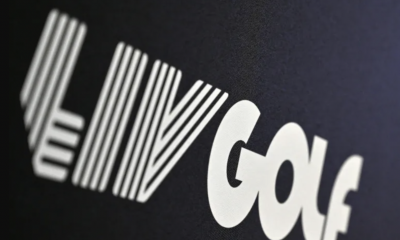
 19th Hole4 days ago
19th Hole4 days agoReport: LIV Golf identifies latest star name they hope to sign to breakaway tour
-

 19th Hole2 weeks ago
19th Hole2 weeks agoAddiction, spinal fusion, and scam artists – Everything Anthony Kim revealed in candid interview with David Feherty









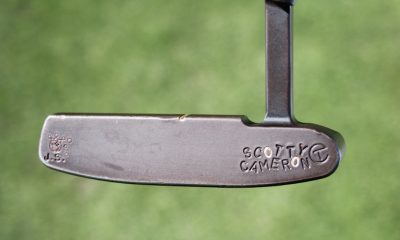

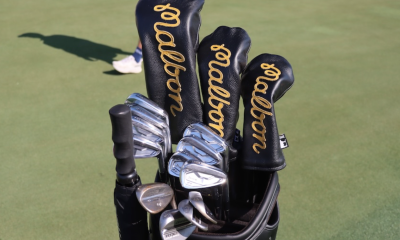

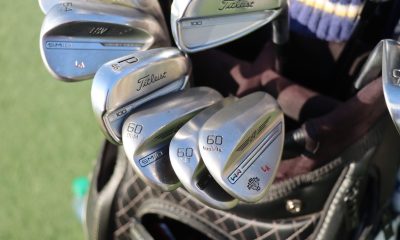

NB
Mar 28, 2015 at 9:35 am
Statistics used in this article are incorrect. Just check pgatour.com for accurate 1-putt probabilities. Stats from 5-6 feet: http://www.pgatour.com/stats/stat.344.2014.html
Tom HIll
Mar 28, 2015 at 4:02 pm
Cool NB – those were just the stats I was looking for and couldn’t find – putts made at specific distances – all I could find, that was germane, at that site were putts made from under 5 feet, from 6 to 10, 10 to 15, 15 to 20 etc. Hah – just watched Kevin Na miss a 2-footer at the Valero…
Dave N
Mar 27, 2015 at 2:17 pm
Played basketball in college (85% FT shooter) and I am a mid-capper in golf. IMO, three footers are easier, generally. (Unless we’re talking a lightning fast downhill left to righter–in which a more reasonable comparison would be an outdoors FT with strong wind). Putting is a simpler motion, and most 3 footers are pretty predictable in terms of pace and direction. Shooting FTs involves active participation by so many major muscles (feet, calves, quads, gluten, abs, back, shoulders, triceps, forearms, hands, fingers) that to be out of sync or twitchy a little bit in any area means a likely miss. It’s not a hard shot by any means, but harder than 3 foot putts. To the extent that this matters- I’m rarely upset if I miss a FT in a game, but if I miss a 3 footer, I’m ticked off for days.. Fun topic/comparison.
Jake W
Mar 26, 2015 at 5:22 pm
I come up with about a 3.55 foot putt being equivalent to a free throw.
By my calculation, a free throw is taken 18.95 ball diameters from the hoop. This equates to 31.83″ from the hole on a putt, given that a golf ball is 1.68″ diameter. Then you have to consider the ratio of ball size to hole size (2.53 for golf, 1.89 for basketball). 2.53/1.89 is 1.34. 1.34 times 31.83″ equals 42.65″ which converts to a 3.55 foot putt.
I realize there’s some assumptions made here and it probably doesn’t follow perfect logic, but I’m trying not to over-think this…
Any questions?
Jafar
Mar 26, 2015 at 3:45 pm
I think it’s hard to compare the two because in basketball your fingers are in contact with the ball till the very end of the release so you can add more “feel” to it.
In golf you have a club, and therefore only feel something until after contact has been made.
But I like the idea of correlating the two sports despite this.
Phil
Mar 25, 2015 at 1:54 pm
I’ll have to go with freethrows. Definitely both include pressure and major nerves, but freethrows at the end of a game usually mean you’re exhausted and winded.
Mnmlist Golfr
Mar 25, 2015 at 11:59 am
3-footers on the PGA Tour = Point-After-Touchdown in the NFL
Scooter McGavin
Mar 25, 2015 at 6:56 am
I’m not even good at golf, but as someone who has played both sports, I’m still going to have to say 3 footers are easier.
Vadim
Mar 24, 2015 at 11:19 pm
what is the point of this article again?
Rick
Mar 26, 2015 at 1:49 pm
Jesus-It’s entertainment. lighten up
mike
Mar 24, 2015 at 7:08 pm
At least on the professional side, 3 footers are much easier. Just have to look at 3 footer converstion rates on the PGA tour vs the free throws percentages in the NBA. It’s a no brainer.